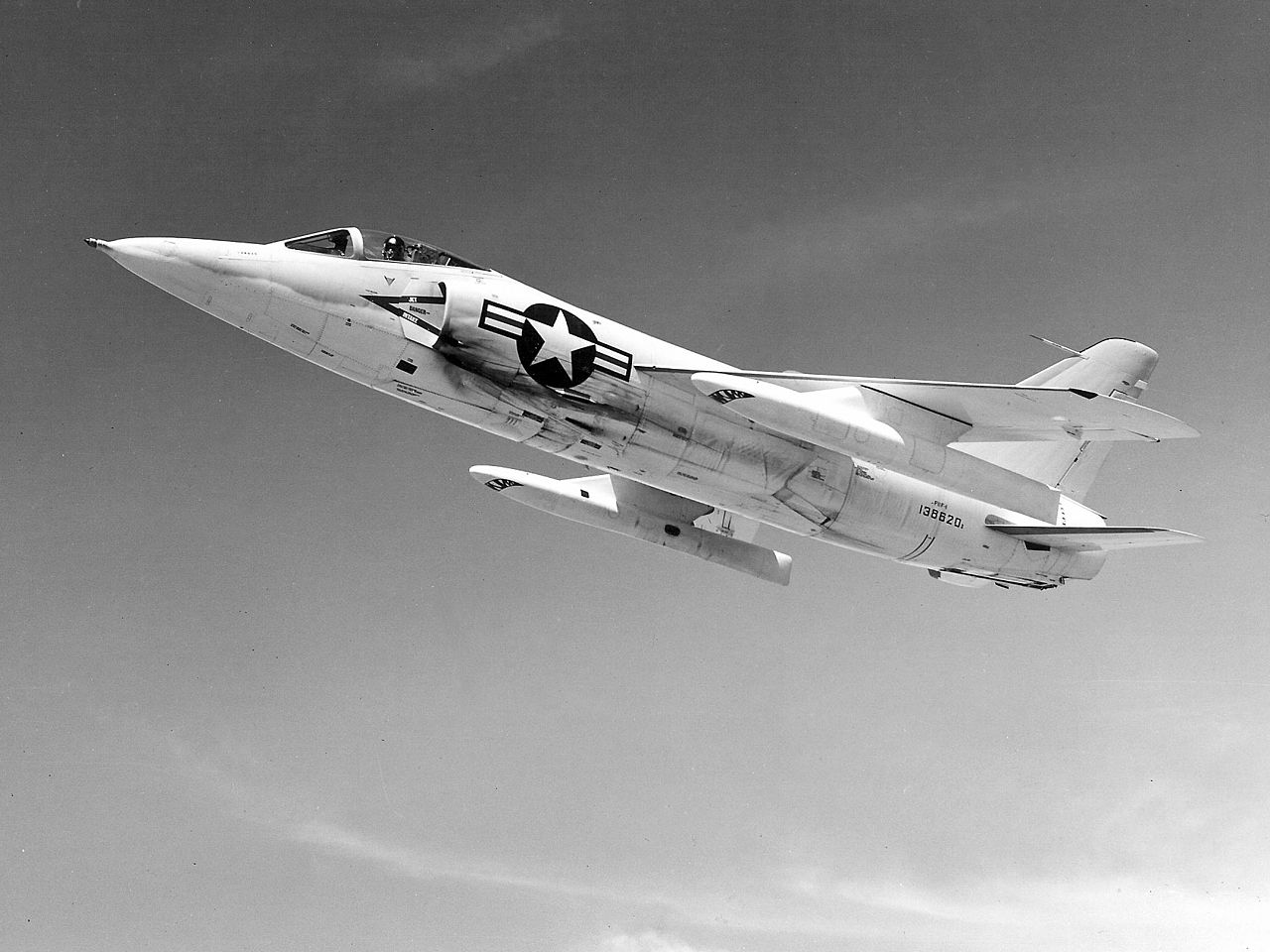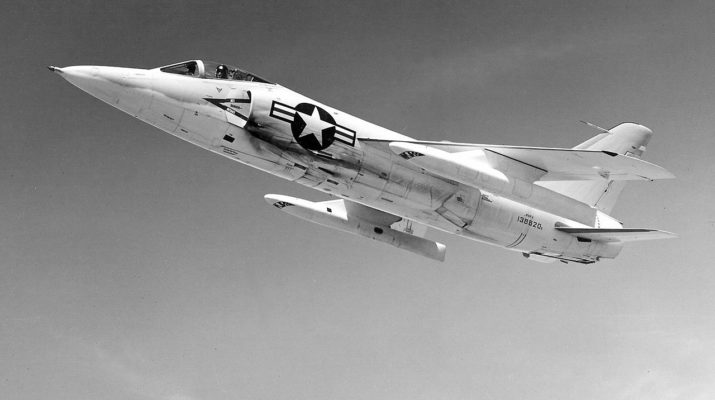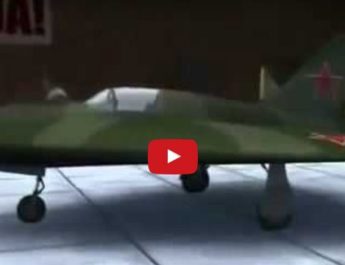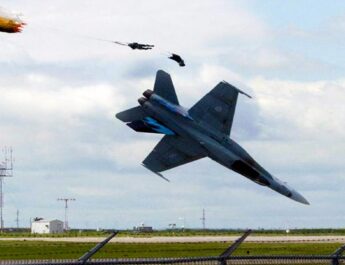The Grumman F-11 Tiger was a supersonic, single seat carrier based U.S. Navy fighter aircraft, in service from 1956, until 1967. The Blue Angels, US Navy flight demonstration squadron, retired their F-11s during the 1969, which spelled the end of active service of F-11.
It maiden flight was on 30th July 1954, and two years later, it was introduced to US Navy. Like all of Grumman aircraft it was named after a cat – in F-11s case, a predatory tiger.

On September 21, 1956, the GAC (Grumman Aircraft Corporation) was testing their new F-11 Tiger, some 20 miles (32 km) from shore, over Atlantic Ocean, in an exercise that included the use of live ammunition.
Veteran Grumman test pilot, Thomas W. Attridge, entered a shallow dive of 20 degrees from an altitude of 20,000 feet. At Mach 1.0 speed, Attridge fired short four-second bursts at the altitude of 13.000 feet, expending around 70 rounds in total.
After advancing the engine to afterburners and placing his fire on hold, he entered into a steeper dive and fired the second burst to empty the magazine belts. Whilst firing, his plane continued to descent, passing through to 7,000ft.
Suddenly, engine started to make rattling noises which forced the pilot to crash-land the aircraft on his attempt to return to GAC’s Long Island airfield. Miraculously evading a fatal outcome, Attridge was medevaced to the base, while the F-11 was almost completely destroyed.
Post-accident examination discovered that one 20-millimeter bullet had gone through the plane’s windshield, another through the right engine intake, while the third had punctured the nose, while engine’s inlet guide vanes were also struck by 20-millimeter rounds.
The investigation concluded that Attridge accidentally shot his own F-11 down when the rounds fired during the test had slowed down enough that they were barely traveling faster than the jet that had just discharged them. When the Tiger went into a steeper dive, it flew directly underneath the arc of the bullets’ flight path, allowing them to hit the jet.
This was the first time in the history of the aviation that the fighter jet managed to shoot itself down. The reason for occurrence of this unusual accident led Navy flight instructors to advise all trainee pilots to turn their aircraft away through a hard bank, in order to avoid similar accidents.
Thomas W. Attridge returned to active flight status less than six month after the crash, achieving significant corporate career within the GAC later in life. He passed away in 1997.
Bonus video – Blue Angels Grumman F-11F Tigers



